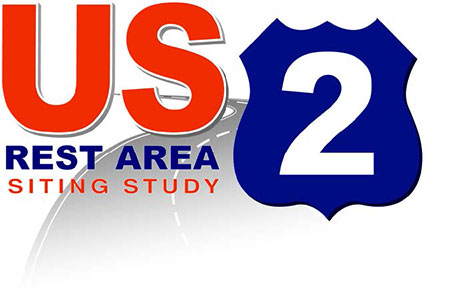
What is the US 2 Rest Area Siting Study?
The US 2 Rest Area Siting Study is a planning assessment occurring before project-level activities. The process involved evaluating gaps in rest area service, needs, constraints, public and agency input, and financial feasibility.
Who conducted the study?
MDT conducted the study in coordination with FHWA, local jurisdictions, and other agencies. DOWL assisted MDT to complete the study by June 2019.
What steps were taken during the study?
Steps in this study process are described below. Opportunities for public input were available throughout the study.
- Field Review and Data Collection
DOWL conducted a field review to visually inspect constraints and opportunities within the study segments. The review focused on identifying physical and environmental features that could adversely impact rest area site development. Additionally, DOWL investigated water and wastewater systems, irrigation, traffic volumes, and safety features. In areas where field reviews were not practicable DOWL reviewed publicly available information to identify avoidance areas and potential siting locations. DOWL prepared an Existing and Projected Conditions Report reflecting the information collected during this review. - Identify Needs and Objectives
The study was consistent with guidelines from the Montana Rest Area Plan and included MDT input and public feedback to identify needs and objectives for the study. - Site Screening and Evaluation
Based on the study needs and objectives, DOWL developed screening criteria to assess the feasibility of rest area development in each study segment as practicable. These criteria were used to identify preferred rest area site locations and prioritize the order in which segments should be addressed through future projects. - Draft Corridor Study Report
DOWL prepared a draft corridor study report documenting the planning process, including public, agency, and stakeholder involvement; key findings; recommendations; and next steps. Study deliverables and public and agency comments were summarized in the report and included in their entirety as appendices. The report was available to the public for a comment period of 30 days. - Final Corridor Study Report
Following the 30-day public comment period, DOWL summarized comments and coordinated with MDT to publish the final corridor study report.
How can I be involved in the study?
Members of the public may review published material related to the study on the Documents page. MDT and DOWL considered all comments to better understand the needs, priorities, and constraints of the study corridor. To comment on the study, visit the MDT Comments page.
